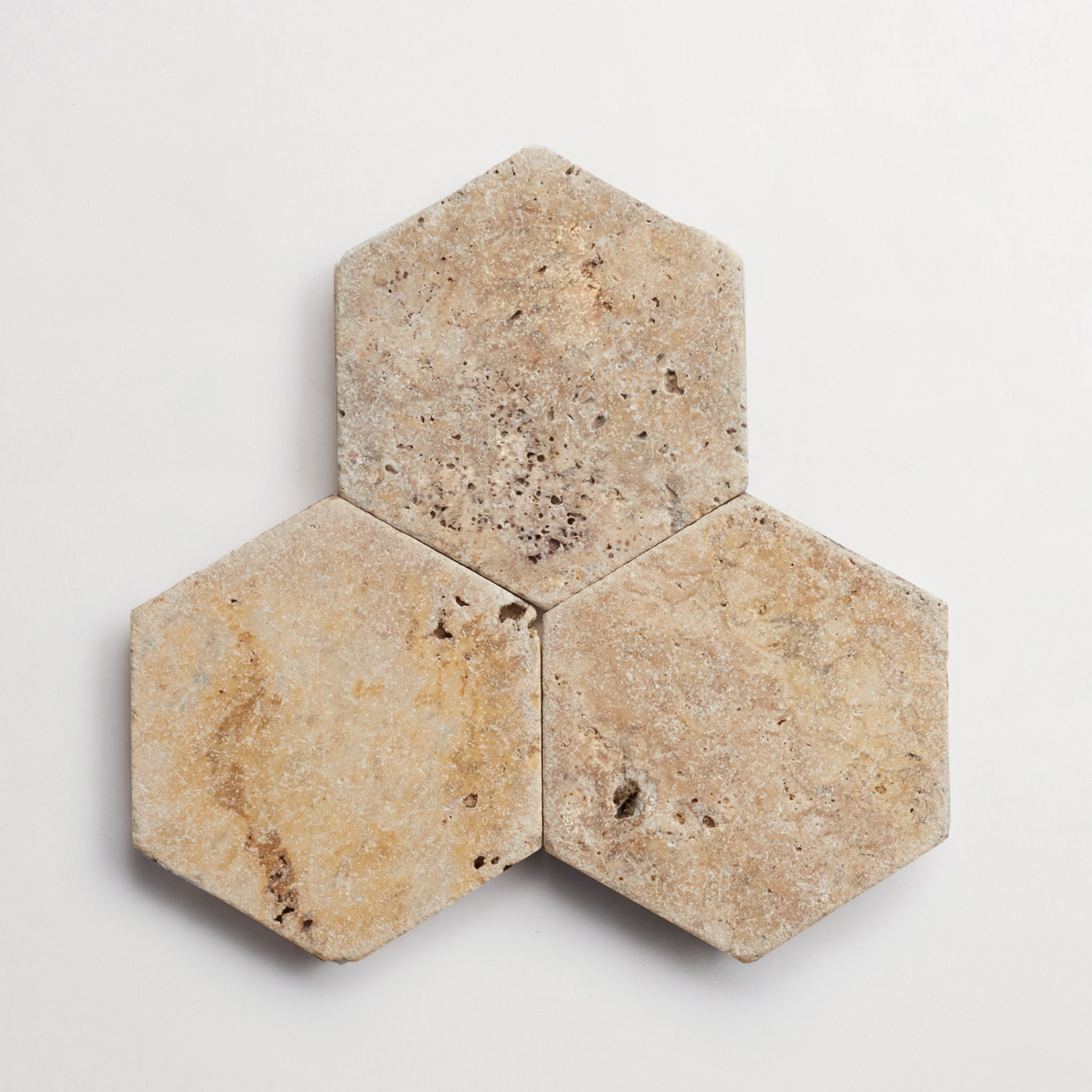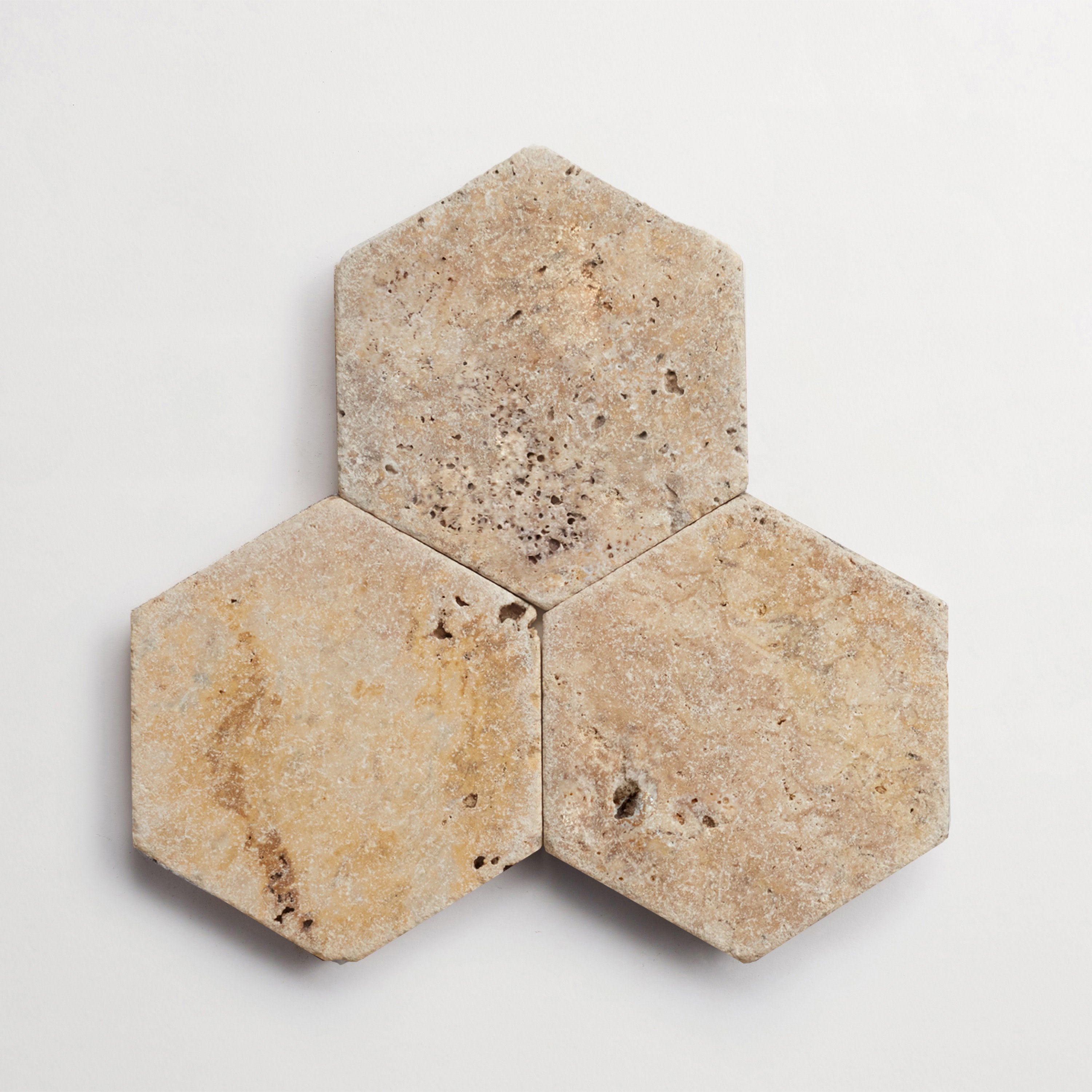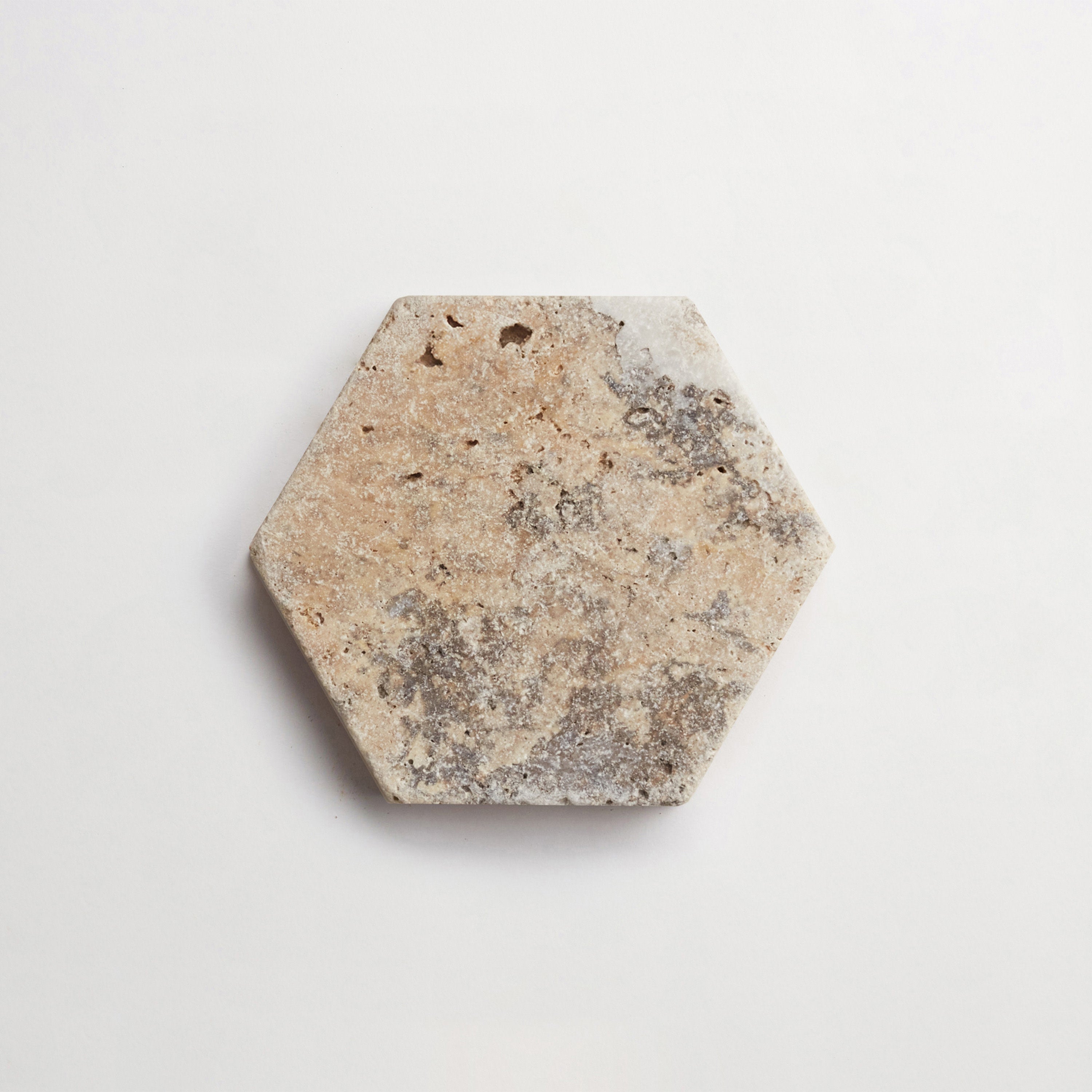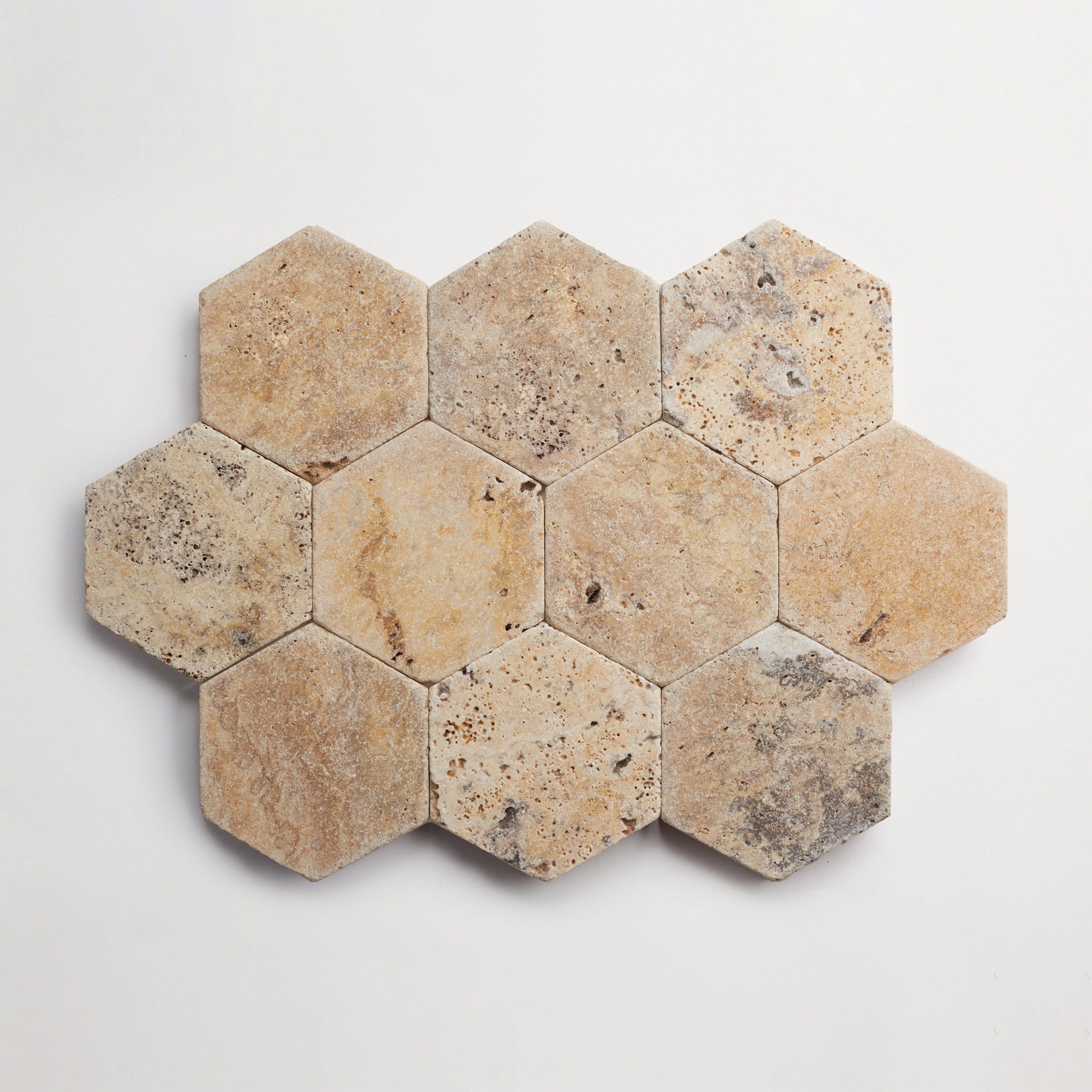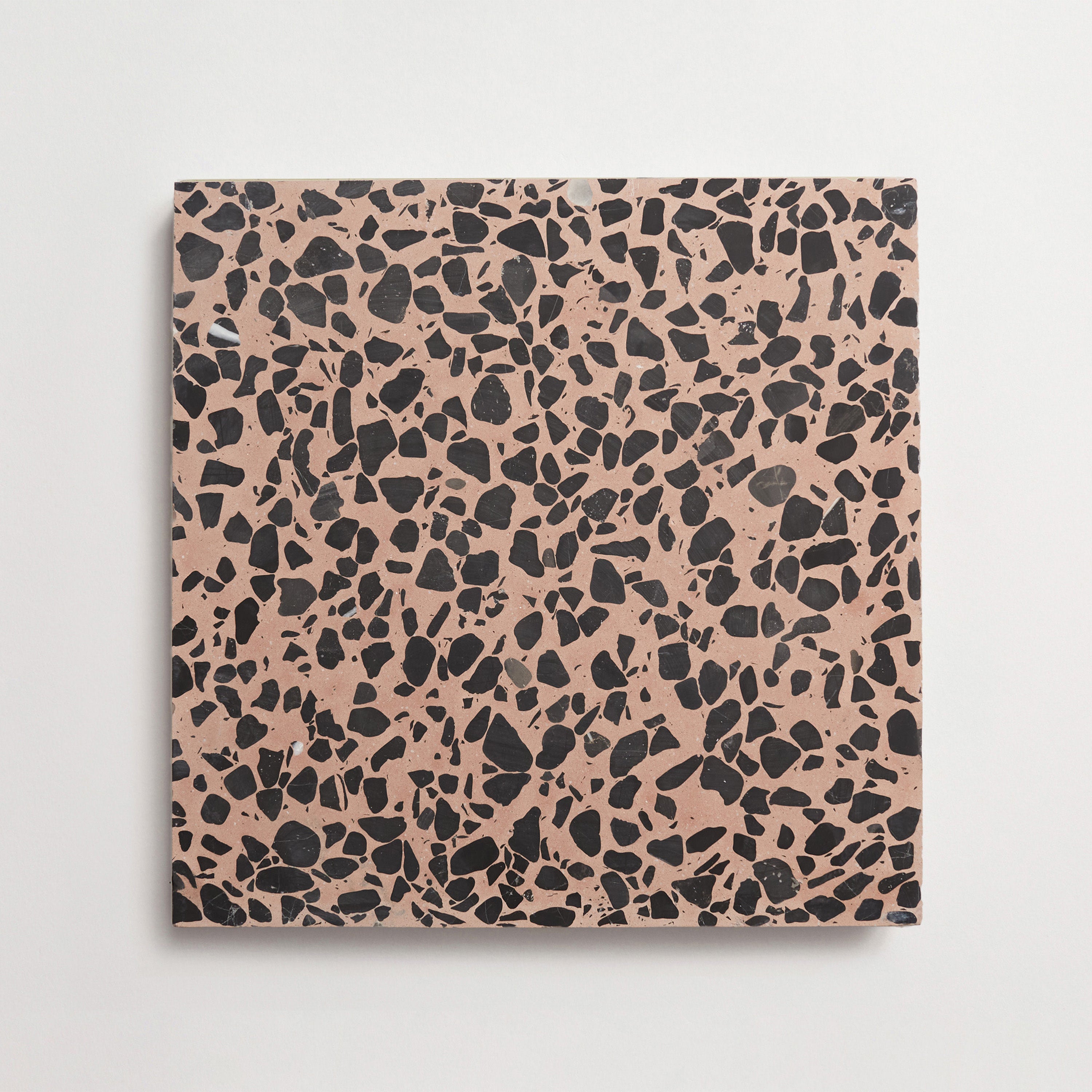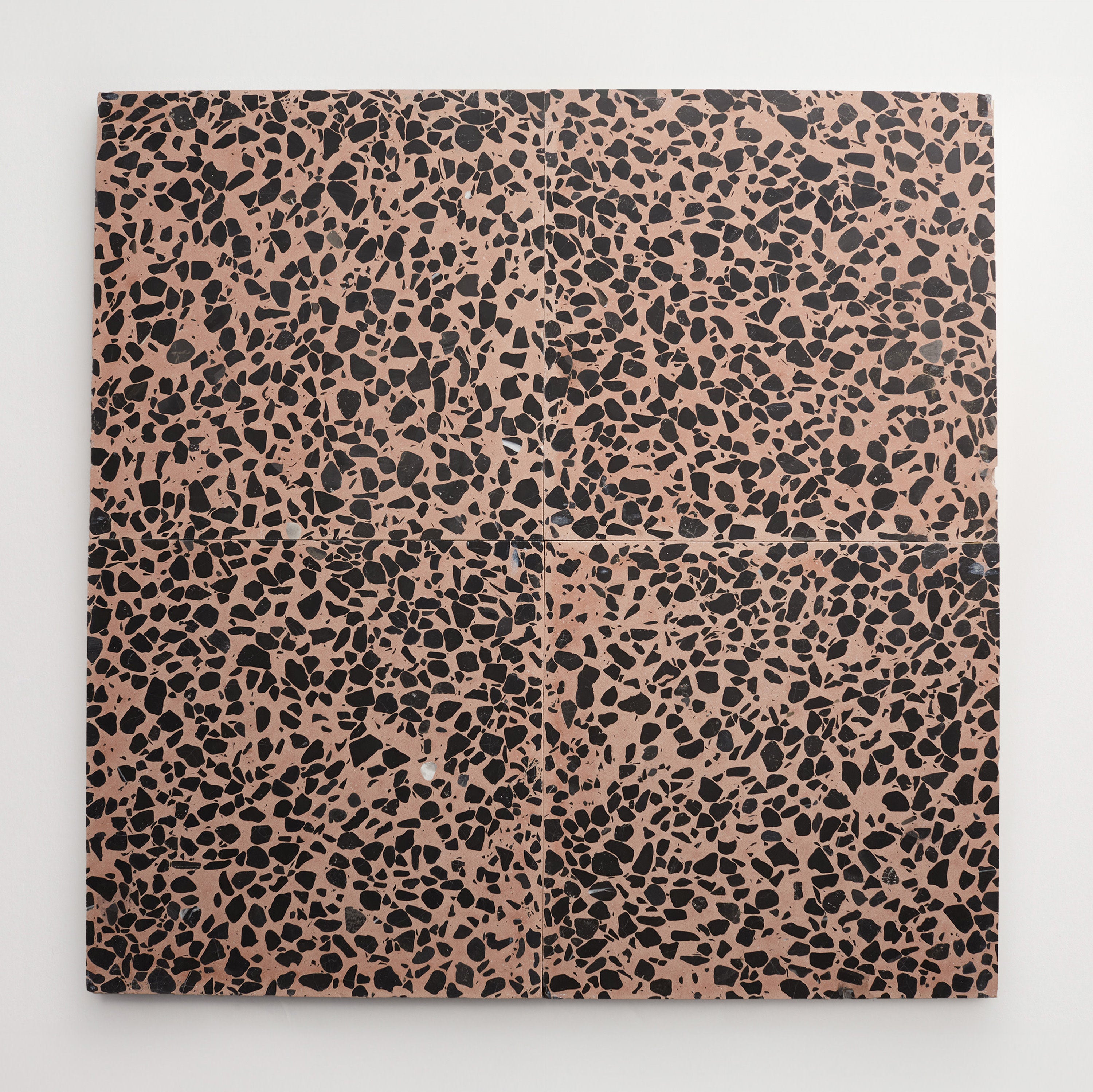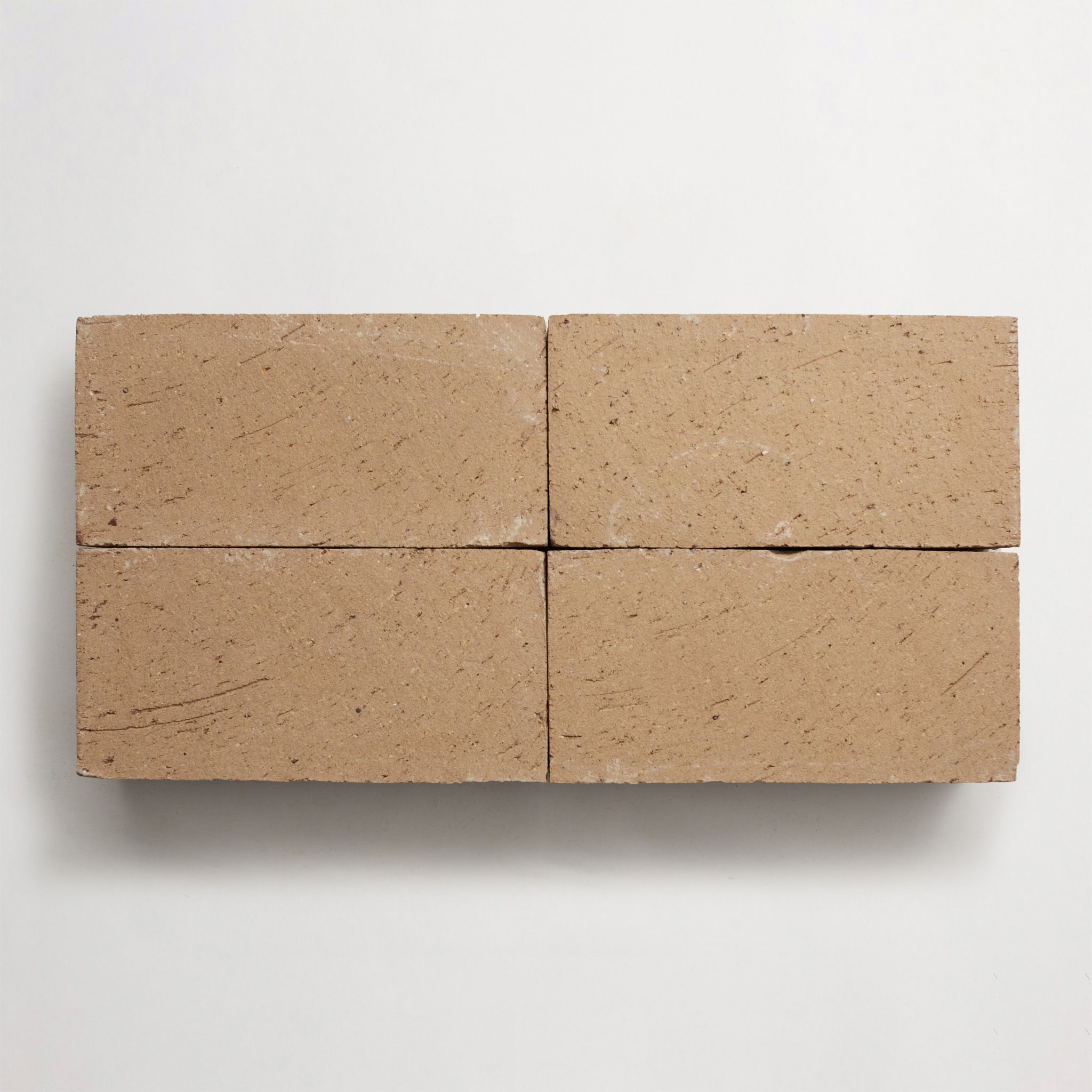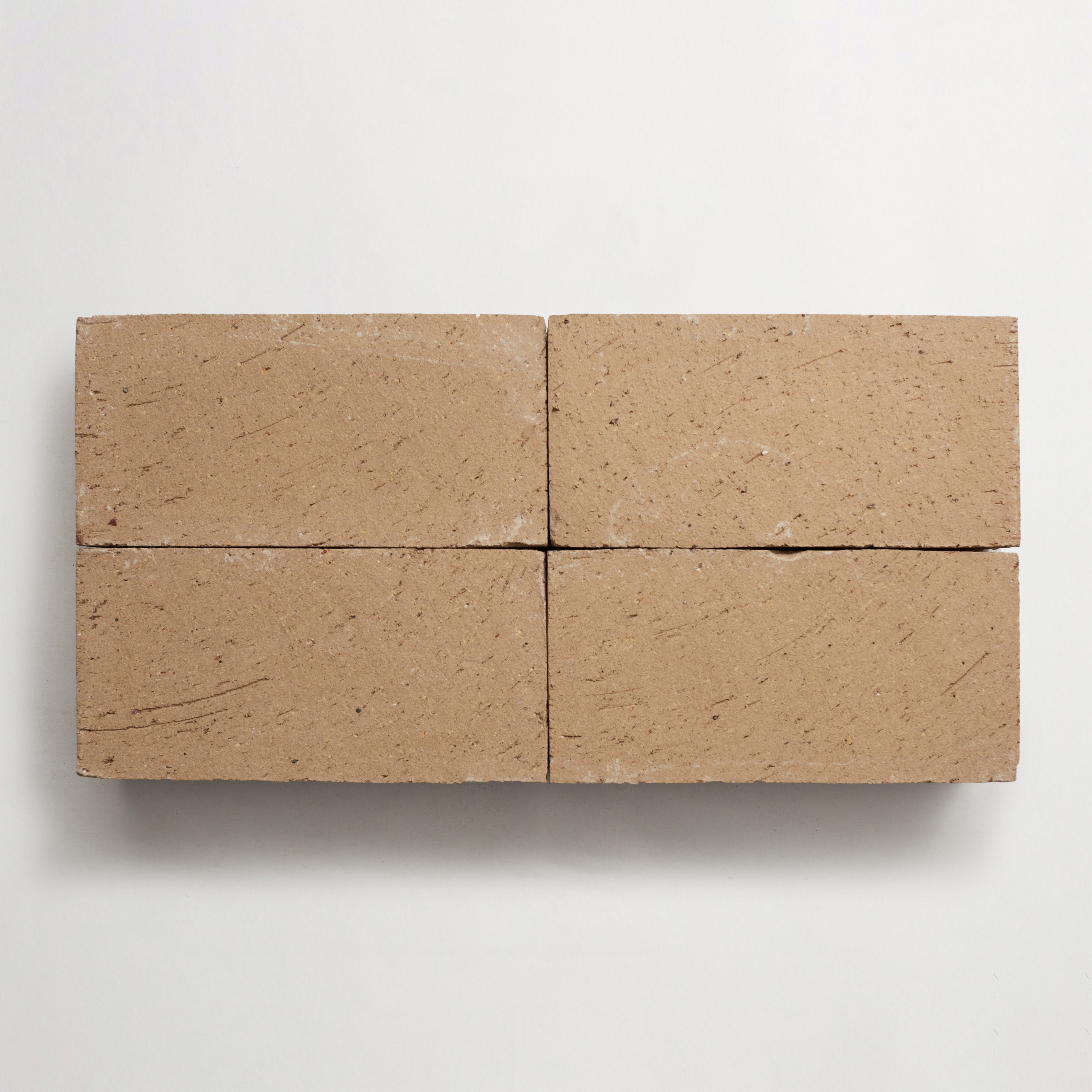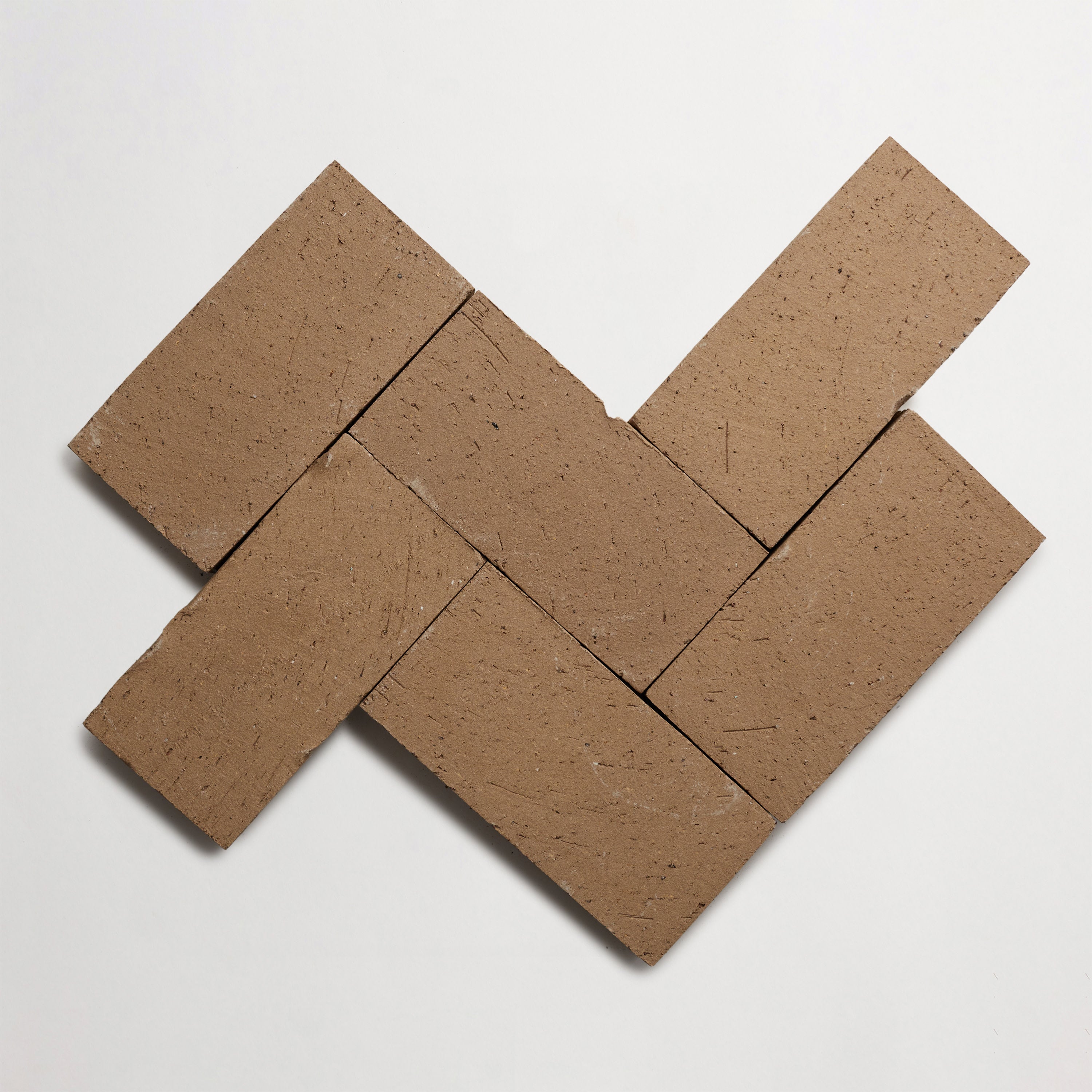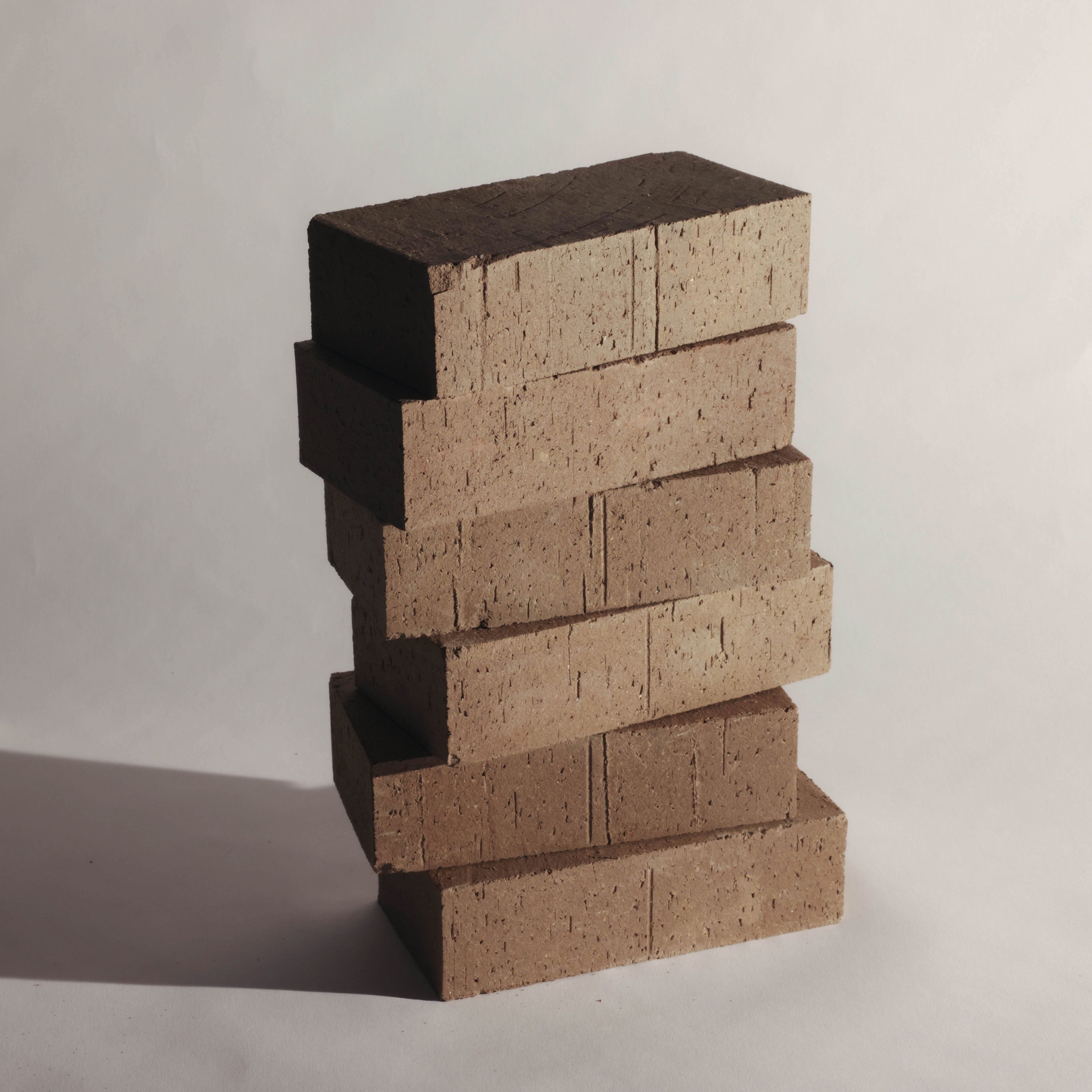your shopping cart is empty.

10 Striking Garden Focal Point Ideas for Refined Landscapes
A garden can serve as a dynamic extension of any built environment — an outdoor space that bridges the gap between nature and human-made structures. And introducing a focal point in this area is a great way to guide the eye, create a sense of balance, and draw attention to distinct areas.
Whether you’re working on an expansive backyard or a small garden, a well-placed object — be it a sculpture, pond, or fire pit — becomes a starting point for a visitor’s journey. This article explores 10 garden focal point ideas that add color, interest, and texture to a space, and offers principles for integrating these elements into any design.

FezBrick, 1x8" Amulet, Natural, Unfinished. Photo courtesy of Nourhan Sabek.
10 Garden Focal Points to Elevate Your Design
From patterned tile pathways that lead the eye to sculptural furnishings that bridge indoor and outdoor décor, these ten strategies demonstrate how material, form, and placement work together to create memorable moments.
1. Guide the Eye with Patterned Tile Pathways
Patterned tile pathways and stairs are more than mere walkways; they’re visual cues that lead the viewer through different areas. By selecting tiles in contrasting colors or shapes, designers can create a rhythmic sequence along the garden route.
Incorporating glass tiles or geometric lines can also add texture and eye-catching detail. In a small space, a single winding path bordered by ornamental trees or large trees can transform a simple route into a sculptural element, creating functional circulation with aesthetic flair.
2. Ground the Landscape with Sculptural Elements
Sculptures and statues provide an instant anchor in any garden, serving both practical purpose and artistic expression. A contemporary metal sculpture placed near a majestic tree or amongst flowering perennials can also become an unexpected object of interest. Another idea: positioning a stone statue on a raised platform or amid a cluster of rocks and low shrubs.
For intimate spaces, consider small-scale busts or abstract forms that complement surrounding rocks and planters, offering a sense of balance against the organic landscape.
3. Create a Canvas for Artistic Expression with a Tiled Garden Wall
A tiled garden wall — whether clad in colorful ceramics or neutral porcelain — injects vibrant color and pattern into an outdoor decor scheme. Use tile to define kitchen-adjacent patios or deck edges, integrating bench seating or window-facing niches for outdoor seating areas.
A vertical water feature could also be installed on the wall, combining tile and flowing water to produce multisensory interest. Designers might select a repeating motif that harmonizes with flowering shrubs, creating a living gallery that adapts to seasonal changes in the flower gardens.

Dzek + Formafantasma: ExCinere, 2x8" Cigar, Terra A, Gloss. Photo courtesy of French & Tye.
4. Invite Multisensory Connection with a Tiled Water Feature
Water features are among the most versatile focal points, and tiling elevates them to works of art. A tile-wrapped pond or fountain lined with glass rondelles reflects light and color, turning a simple water basin into a shimmering centerpiece. The gentle sound of flowing water paired with the tactile texture of tile invites people to linger in the space.
Whether positioned near ornamental trees or nestled between planters, a tiled water feature provides both visual drama and a soothing auditory backdrop, making it an example of how to enrich a garden’s ambience.
5. Add Nighttime Drama with an Outdoor Fire Feature
A fire pit or linear fire bowl serves as a focal point that transforms a garden after dusk. Surrounding the fire pit with tile — such as terracotta or slate — creates an eye-catching ring that contrasts with the natural palette of rocks and shrubs.
To elevate the look even more, outdoor lighting embedded in the tile reveals textures and shapes, highlighting seating areas while offering warmth and a view to gather around. For modern garden focal point ideas, consider a fire feature integrated into a low planter or fountain, combining flames with reflective pools for maximum impact.
6. Integrate Tile-Wrapped Benches for Moments of Stillness
Seating areas are practical focal points, and wrapping benches in tile unites comfort with decorative flair. A bench tiled in muted earth tones can serve as a subtle accent in a flower garden, while bold patterns can become a statement in different areas of the design.
Position benches to frame views — across a pond, toward a large tree, or overlooking a distant landscape — and use tile borders to define the space. In small gardens, a single tile bench against a living wall or beneath a pergola creates an intimate pause point that encourages contemplation.
7. Add Rhythm and Balance with Architectural Planters
Architectural planters — crafted from tile, cement, or terracotta — introduce scale and structure to a garden. Tiled planters in complementary colors can delineate pathways, mark transitions between an outdoor deck and lawn, or separate flower beds.
For extra rhythm, varying planter heights can create layers of foliage and blooms, from low-growing ground covers to ornamental trees. Grouping planters in odd numbers or alternating shapes also lends a sense of balance, making these objects both functional containers and sculptural accents.
8. Introduce Sculptural Furnishings That Compliment the Landscape
Beyond static sculptures, functional furnishings — such as tile-topped tables or stone benches — enhance the garden’s livability. A low table with a colored-glass inset or tile mosaic offers a spot to place drinks during outdoor dining near the kitchen. Position a tiled coffee table within a seating area, and then use surrounding chairs and cushions to frame it as the centerpiece.
These sculptural furnishings bridge indoor and outdoor décor, reflecting interior design motifs while maintaining the garden’s material palette.
9. Shape Sightlines with Arbors, Trellises, and Pergolas
Architectural structures like arbors and pergolas frame views, creating focal corridors that draw the eye toward a distant point — a majestic tree, a pond, or an outdoor sculpture. Incorporate tile detailing on the bases or caps of columns to tie the structure into the broader color scheme.
Creeping vines and flowering plantings can soften any hard edges, offering seasonal flower displays. By aligning a pergola along a deck’s edge or near a back door, designers turn a simple pathway into a procession, heightening anticipation as people move through the space.
10. Define and Highlight with Outdoor Lighting
Outdoor lighting is the invisible sculptor of the garden, defining objects after dark and creating layered interest. Uplights accentuate the texture of a large tree or statues, while downlights on arbors and trellises cast intricate shadows. LED strips beneath tile benches or planters can add an ambient glow, highlighting color and surface texture. A well-lit pathway or set of steps can use recessed lights to guide visitors with a subtle touch.
Lighting transforms any project into a 24-hour experience, ensuring that focal points command attention at all hours.
How to Create Focal Points in the Garden
Before diving into specific techniques, it’s important to understand four guiding principles that ensure any focal point feels both intentional and harmonious within the overall composition. Namely: layering depth and texture, getting the scale right, choosing appropriate materials, strategic placement.
Adding Depth, Texture, and Contrast
Depth arises from layering plants, hardscape, and objects, while texture comes from mixing materials like tile, glass, wood, and stone. Then you have contrast, which emerges when smooth surfaces meet rough ones.
Setting a textured tile bench against a backdrop of fine-grained gravel, or a smooth pond edge, creates a tactile dialogue. Consider pairing coarse tree bark with glossy ceramic planters, or placing a steel sculpture amidst feathery grasses. These juxtapositions heighten visual interest and keep the viewer engaged.
The Importance of Scale
Scale determines how a focal object relates to its surroundings. A small sculpture in a large lawn can feel lost, while a massive fountain in a tiny courtyard overwhelms the space.
Designers must measure the area, account for sightlines from windows or decks, and select elements — like a large tree, an outdoor seating area, or a tiled wall — that harmonize with the project’s proportions. Even in a small garden, a vertically oriented planter or a slender water feature can read as significant without consuming too much floor area.
Choosing the Right Materials
Material selection influences the durability, maintenance, and aesthetic coherence of the entire space. Porcelain patio tile offers frost resistance for fire pits and pond linings, while natural stone blends seamlessly with rocks and shrubs. Meanwhile, glass brings color and light reflection to water features, while cement tiles provide a vibrant backdrop for greenery.
When matching materials, group no more than three core textures — such as tile, wood, and metal — to avoid visual clutter.
Placement That Draws the Eye
Effective placement aligns focal points with natural sightlines and movement patterns. Position features near entry points, window views, or at the ends of pathways to capture attention.
You can also use plants to frame or partially veil objects, creating moments of discovery as people wander. Rotating seating areas or benches slightly off-axis can reorient the view toward a pond or sculpture. For multi-purpose spaces, consider dual focal points — like a fire pit and adjacent pergola — to define different zones within one outdoor area.
A thoughtfully designed focal point is more than decoration; it’s a strategic element that guides movement, frames views, and amplifies the narrative of a landscape. From patterned tile pathways and sculptural planters to dynamic water and fire features, each idea offers opportunities to infuse projects with texture, color, and lasting impact.
-
Pumice
-
Pemberley Pavers
:
-
Acquiterre
-
4
" x
-
4
" x
-
⅛
"
-
sqft
/
$
-
Argilla
-
Dolce Vita Terrazzo
:
-
Torrone I
-
8
" x
-
8
" x
-
⅞
"
-
sqft
/
$
-
Pampas Grass
-
BrickWorks
:
-
4
" x
-
16
" x
-
⅝
"
-
sqft
/
$





